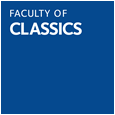Series of provinces and peoples were something new in Roman art. They were a distinctively Roman way of representing their empire visually, and reflect a distinctively Roman and imperial mode of thought. Such images are most familiar to us in sculpture from the reliefs that decorated the temple of Hadrian in Rome, and on coins from the ‘province’ series of Hadrian and Antoninus Pius. We know, however, from various written sources that extensive groups of personified peoples were made at Rome under Augustus. Recently, the discovery of such a series in relief at Aphrodisias, there called ethne (peoples), allows us for the first time to see what an early imperial group of this kind looked like. The new reliefs were part of the elaborate decoration of a temple complex, probably called a Sebasteion, dedicated to Aphrodite Prometor and the Julio-Claudian emperors. I have already published in this journal the reliefs with imperial scenes, which portray the Roman emperor from a Greek perspective. This article publishes the ethne reliefs which, it will be argued, set out to reproduce or adapt in a much more direct manner an Augustan monument in Rome. The use of an Augustan-style ‘province’ series in Asia Minor is a telling illustration both of some of the mechanisms in the transmission of imperial art and of a Greek city's identification with the Roman government's view of its empire.



